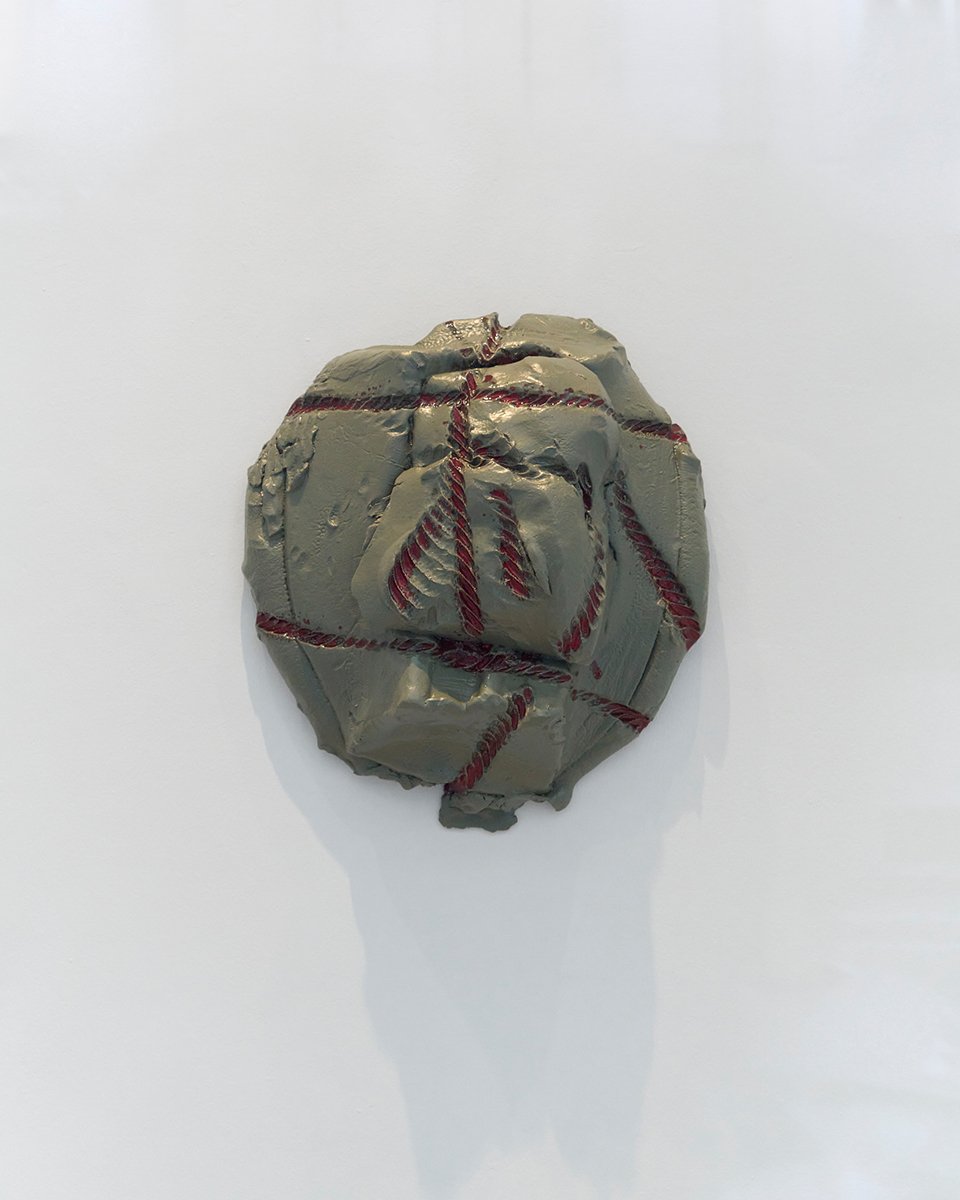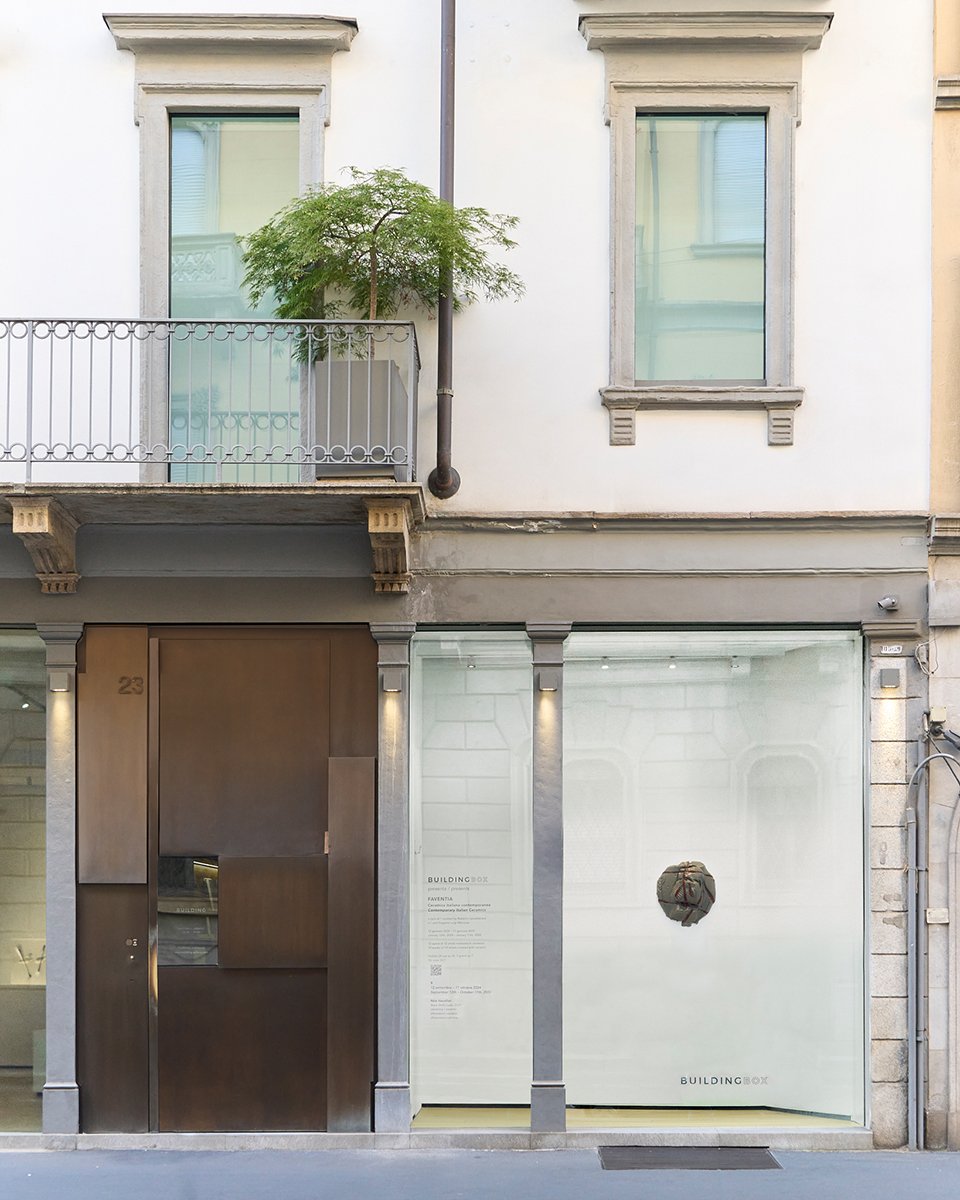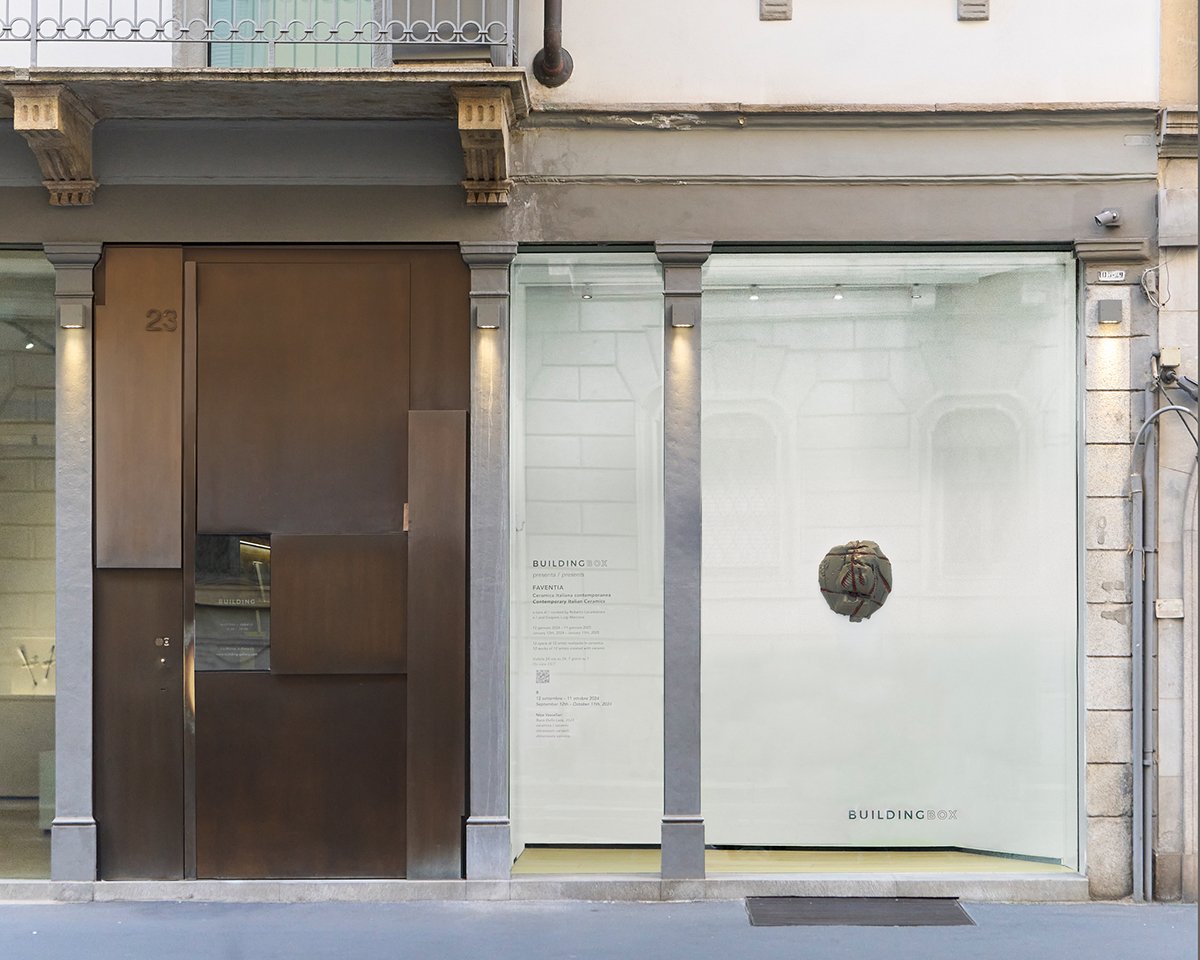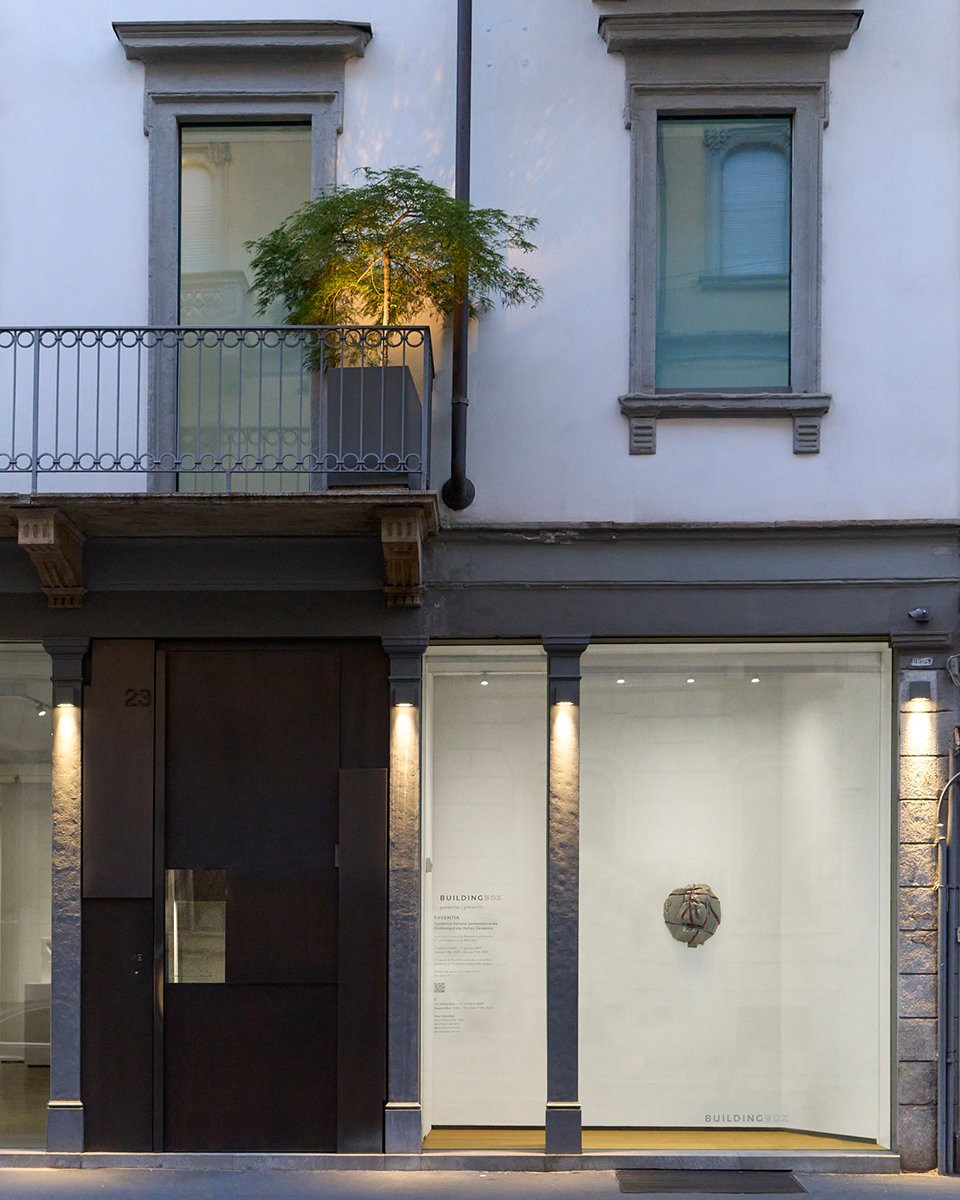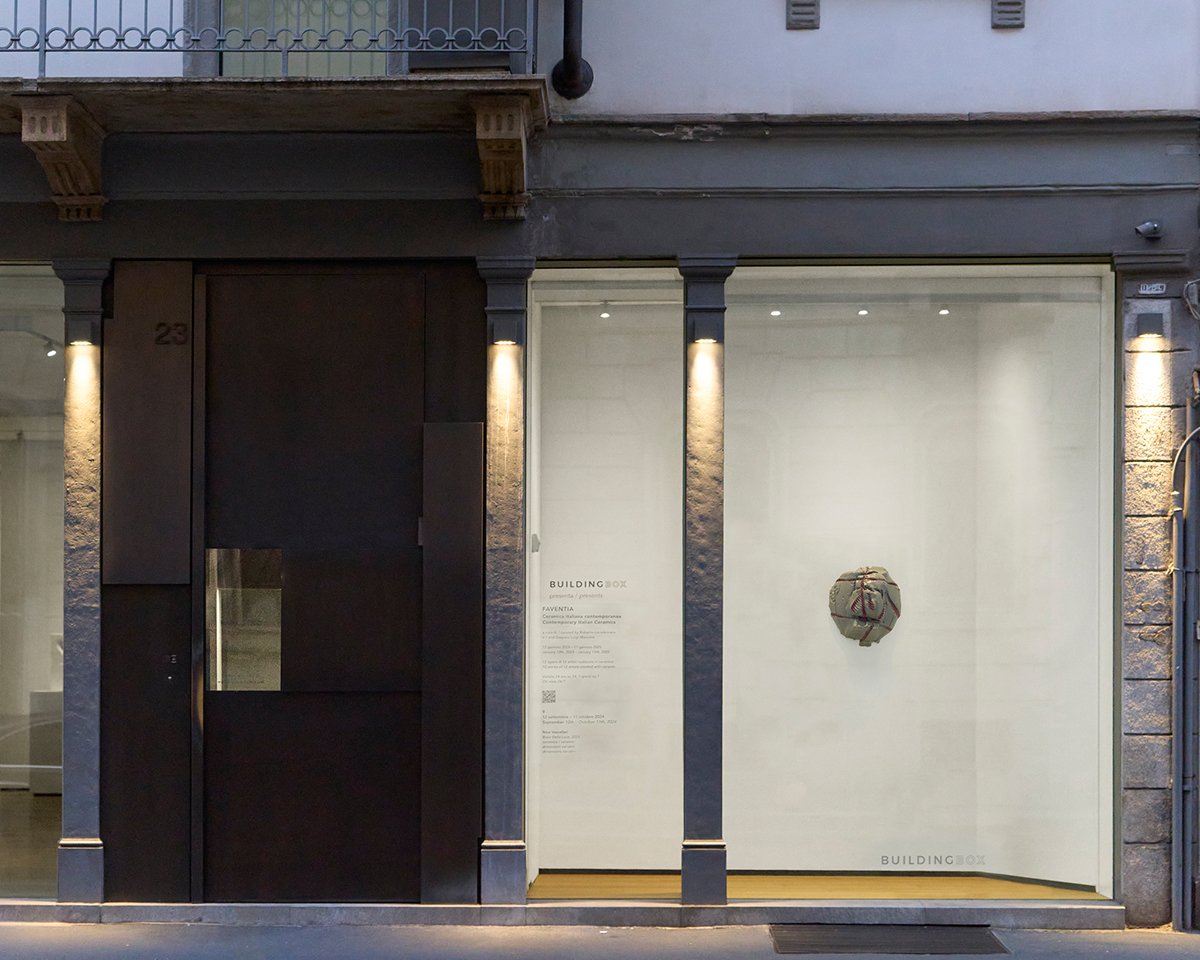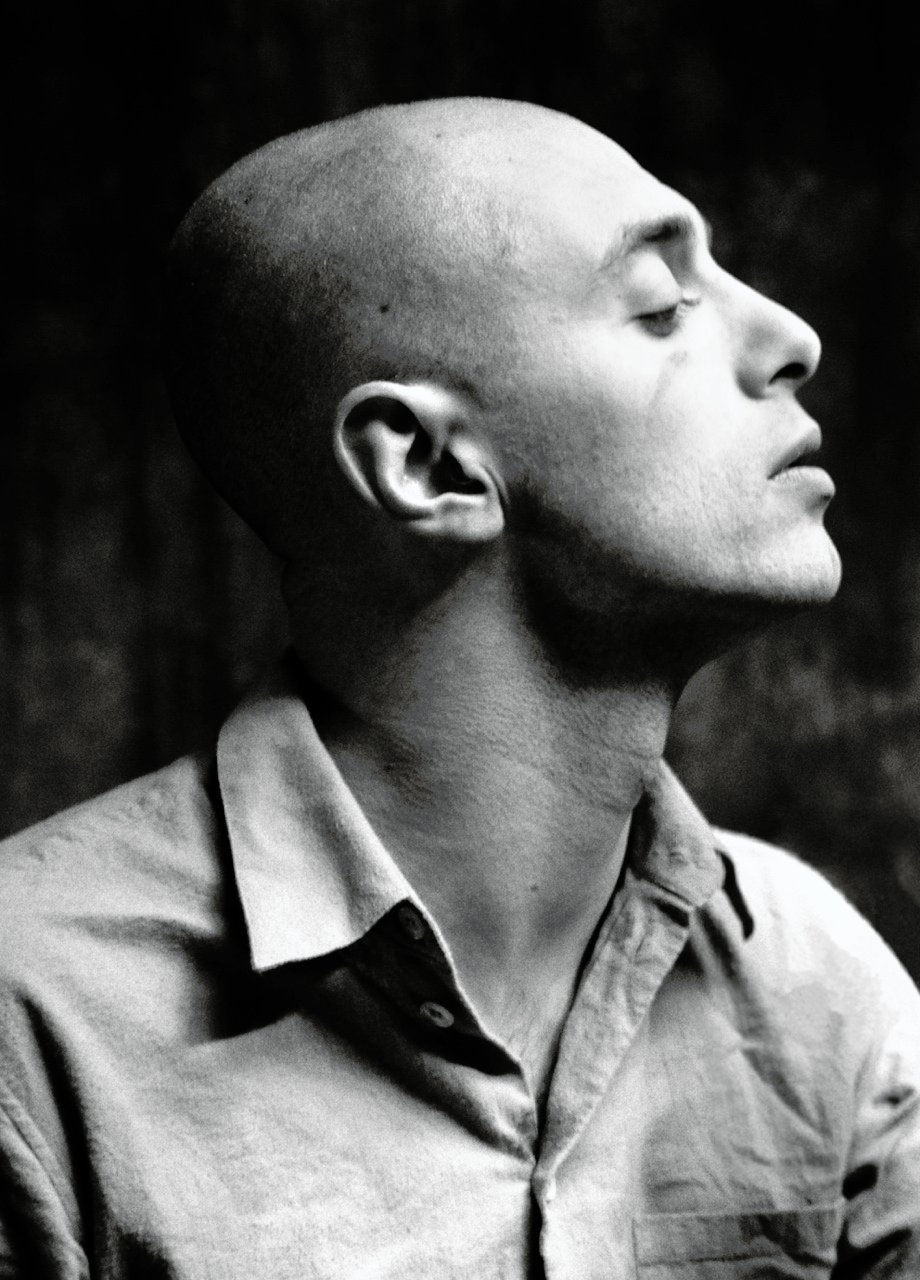FAVENTIA – 9/12. Nico Vascellari
12.09.2024 – 09.10.2024
From September 12th, 2024, to October 9th, 2024, BUILDINGBOX hosts the work Buco Della Luce (2024) by artist Nico Vascellari (Vittorio Veneto, 1976).
The title of the sculpture refers to the dialectal name of the so-called Bus de la Lum (The Hole of Light), a large natural gorge of karstic origin in the heart of the Cansiglio forest, a place not far from the artist’s studio in Vittorio Veneto and already the site of numerous explorations and performative acts.
The will-o’-the-wisps emitted by the carcasses of decaying animals that fell accidentally or were thrown into the chasm have, since ancient times, fueled legends and folk tales that claimed the site to be a place of magical rituals conducted by witches involved in the kidnapping and killing of children caught in the forest. In the last century, during the years of the Second World War, Bus de la Lum sadly became notorious for being employed as one of the foibas or death pits in which many human beings died, sometimes thrown alive into the chasm, their wrists tied behind their backs.
The terracotta sculpture is the result of the violent fall of a mass of clay shaped according to the artist’s features and weight. Certain details evoke signs of violence and martyrdom of a historical and imaginary iconography (ropes, wooden beams) imprinted in the matter; the force and violence with which the gesture was performed by the artist emerge, highlighting the assonance between the body of the sculpture and the organic body, human or animal. The work could also be read as a metaphor for the figure of the artist ready to “leap into the void” – on occasion heading towards self-destruction or self-harm – that is, experimenting with and overcoming certain physical and conceptual limits.
The work was made at Bottega d’Arte Ceramica Gatti in Faenza.
From January 12th, 2024, to January 11th, 2025, BUILDINGBOX presents FAVENTIA. Ceramica italiana contemporanea [Contemporary Italian Ceramics], an exhibition project curated by Roberto Lacarbonara and Gaspare Luigi Marcone, involving twelve Italian artists invited to exhibit sculptures and installations made of ceramics. This programme is dedicated to the centuries-old artistic tradition of the city of Faenza, one of Italy’s main production districts, as well as the seat and epicentre of themed projects and museums such as the “MIC International Ceramics Museum”, the “Premio Faenza”, and the “Museo Carlo Zauli”. Furthermore, the exhibition was conceived as a tribute toward an area affected by the flood of May 2023.
As with BUILDINGBOX’s usual annual schedule, the exhibition hosts monthly interventions. In this edition, the artworks will be presented on the 12th day of each month. This “numerology” alludes to the cyclical nature and synthesis of earthly, spiritual, and temporal elements, as well as the numerous symbologies associated with the number 12 in history and cultures from different parts of the world.
The project maps and summarises some of the main artistic expressions related to the 20th and 21st centuries ceramics, promoting a series of artists from different generations who, consistently or sporadically with respect to their own production, use clay working techniques by continuing, recovering, or revolutionising the extraordinary manual skill of moulding, and the chromatic-luminist value of the glazes.
The ancient Faventia has been a land of artisan production since Roman times, a characteristic that was enhanced in later centuries. Indeed, it became synonymous of the majolica ceramics in many languages – French (faïance), English (faience). In recent years, many artists have used the Faenza kilns – also thanks to residency programmes, exhibitions, workshops, prizes, and publications – for the artistic production of medium and large-scale sculptures, often designed for an environmental development and installation purposes. The primal, demiurgic act of shaping the clay gives ceramics an exclusive status, almost an ontology, the auroral condition of sculpture. In the manipulation’s plastic immediacy that precedes the firing that crystallises the piece, there is all the naturalness of a slow, thoughtful transformation poised between design and chance. In ceramics, as in drawing, there is the seed of an origin, that appears on the surface of the image and things in the precise moment of their conception. Ceramics – beyond the categorisations between craft, art, functional objects, unique, or mass-produced piece – possesses an intermediary (or intermediality) between thought and gesture, sign and sculpture, form and colour, operating, moreover, with various natural elements such as earth, water, and fire; and by hybridising artistic languages, techniques, research, and knowledge between artists and artisans.



